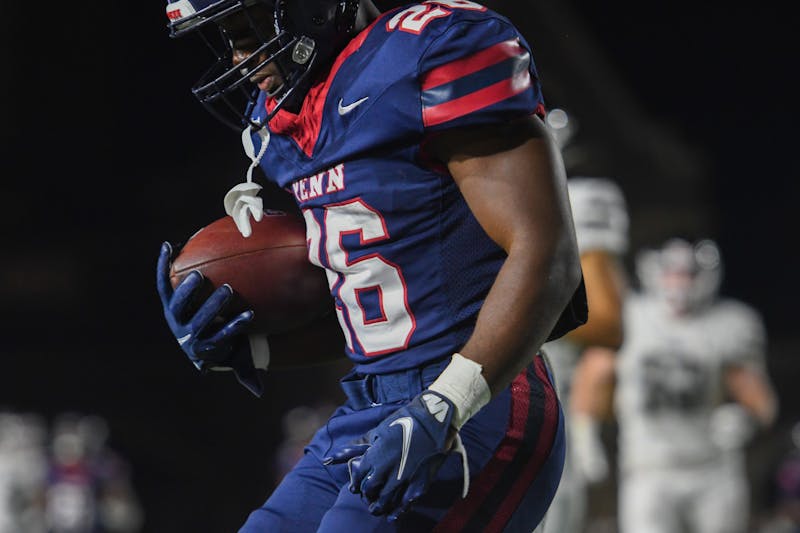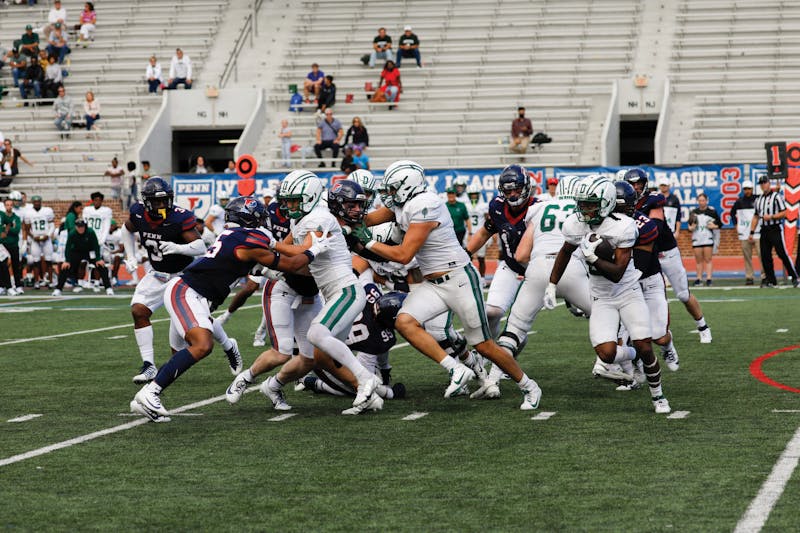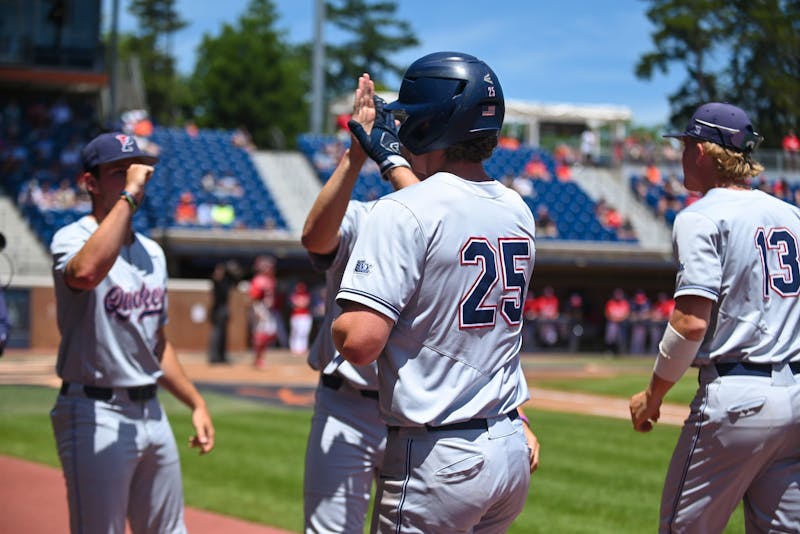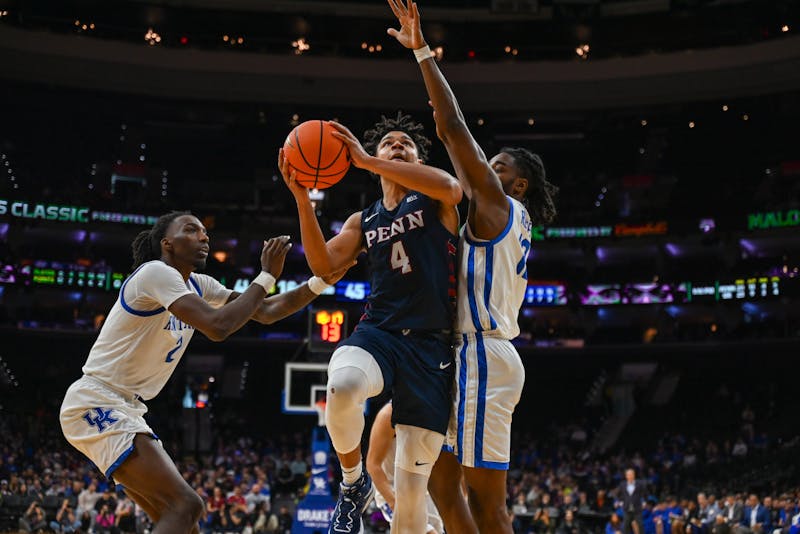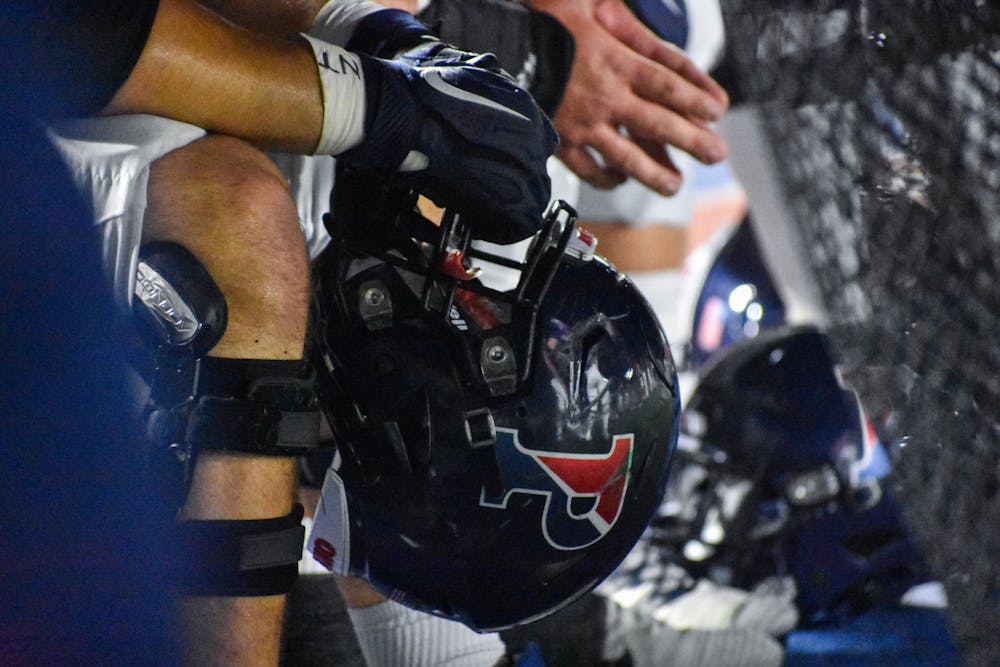
The end of September is quickly approaching, and with that, yet another season of Penn football is just around the corner.
It’s time to dust off the cobwebs of diehard Quakers fandom — which has certainly been lacking in recent years — for a traditionally and historically important program when it comes to the gridiron. If you’re scoffing at that statement, look no further than the red and blue that the Red and Blue don.
Franklin Field, the oldest football stadium in the nation, was completed in 1895, but by the time the Quakers took to the field within the stadium, the program had already secured 19 seasons of experience under its belt.
In fact, the Penn program’s humble beginnings preceded the invention of football helmets or headgear. Player numbers were a thing of the future, and so was the sense of fashion, as the plain white-on-white outfits were an interesting choice, to say the least.
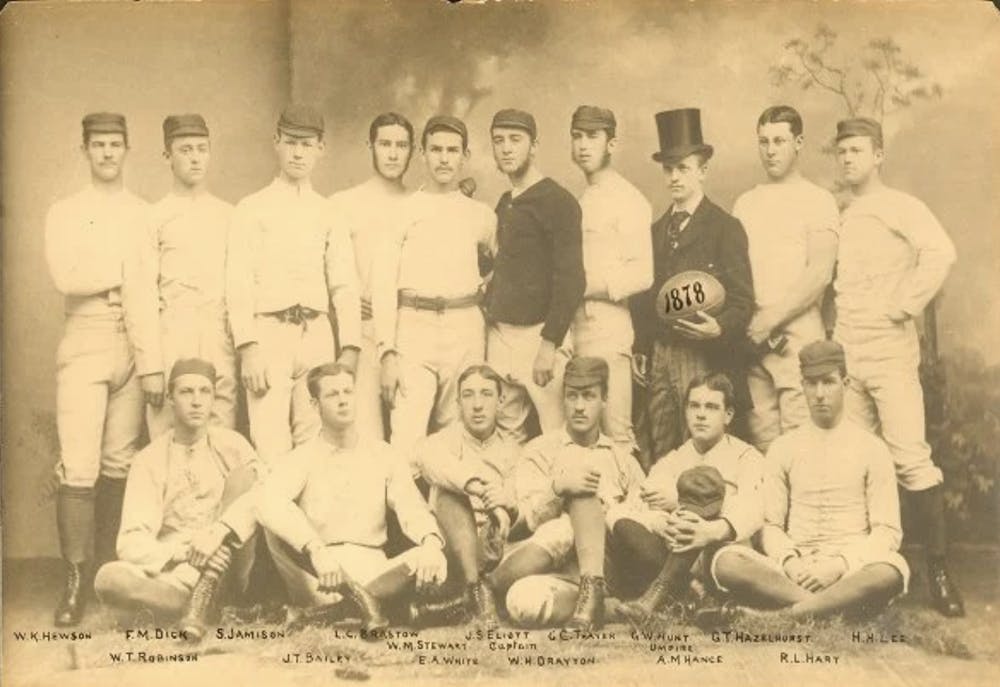
Since their inaugural season in 1876, the Quakers have gone on to play 1,413 games — the most of any school at any division. Over those 148 years, the jerseys that the Red and Blue wear on game days have seen their fair share of evolution, with new coaching regimes consistently bringing in new designs.
One of the staples of the modern-day Quakers outfit is the red and blue stripes. The earliest recorded appearance of these red and blue stripes on the physical jersey can be traced back to the 1882 team that donned long-sleeve shirts plastered with the now-iconic stripes. In the years leading up to this, the stripes had started to make an appearance, notably on the players’ socks.
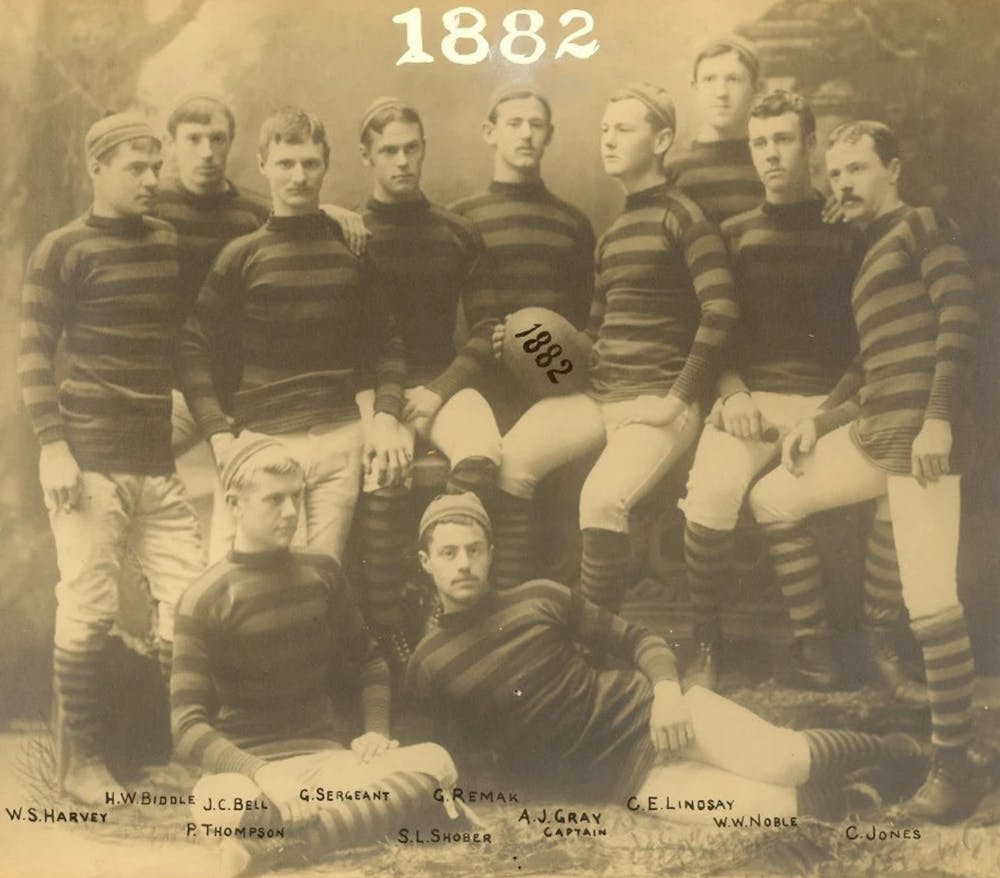
With the invention of the football helmet in the mid-1890s and the development of the game on a national level, the Quakers uniform saw major changes as the millennium turned over. The first Quakers jersey that bears any form of resemblance to what the team reps today would be the 1935 edition.
The jersey design sported red-and-blue-striped sleeves with a solid, navy blue body. On both the front and the back were white block numbers, and the helmet featured an alternating pattern of red and blue stripes as well. This age of Penn football also gave birth to alternate jerseys. Blue was the main feature for the alternates, but when needed, the Quakers would also break out the dark reds.
When George Munger became the coach in 1938, he wasted no time making his mark on the program. Gone were the blue and red jerseys — and in its place were white jerseys with black numbers. The only thing unchanged were the red and blue striped sleeves and helmet. The era of only white jerseys would last all the way until 1956, three years after Munger’s last season at the helm.
While changes to the jersey design were limited during those two decades, the same couldn't be said about the helmets. In 1948, the helmets ditched the red and blue stripes, opting for a new design with a blue base encircling a dark red crown. For the 1954 and 1955 seasons, the Quakers touted red numbers, no red and blue stripes on the sleeves for the first time since they became a mainstay, and white helmets with a single stripe of red and blue down the middle.
If that imagery makes you shudder: good. Not only was the overall look questionable, the Quakers’ performance was abysmal, with the team winning exactly zero games across those two seasons. Unsurprisingly, the 1956 season saw a return of the red and blue stripes. The dark blue jerseys with white numbers returned, and the white jerseys became the alternate instead. The helmets reverted to a navy blue base with a red and white stripe that spans the length.
The 1958 season marked the disappearance of long sleeves on the jerseys, opting for the shorter ones that have carried over to today. The only major change during this time frame was the addition of player numbers to the sides of the helmets. The numbers lasted just four seasons before they were once again removed from the helmet.
Between 1965 and 1980, the navy blue jerseys were once again phased out in favor of an all-red jersey with white numbers. The helmets were a matching red, with a white football outline with the Penn-P logo at the center of the ball. A similar version of this combination of jersey and helmet is now the current team’s alternate option, which was introduced in 2019 as a throwback to the teams of the ’70s to commemorate the 125th anniversary of Franklin Field.
The 1981 season saw the return of the navy blue jerseys as the team’s primary uniform, as well as the more well known Penn-P emblem being on either side of a navy blue helmet. These uniforms marked the transition into the modern era of Penn football, and only minor changes have been made to the jersey since. Barring the 2013 season where the team reverted to an all red outfit, the team has only worn navy blue and white, with the occasional appearance of the red jersey as an alternate option — which brings us to today.
The Quakers will be taking the field against Delaware to open up their season this Saturday with kickoff scheduled for 6 p.m. Game-day threads have yet to be announced, but don’t be surprised to see the Red and Blue trot out not in those colors but in a clean, white jersey with navy blue numbers outlined in red. The Penn P returns on the navy blue helmets, with the whole look finished off by the Red and Blue stripes on the jersey sleeves that have become a main staple of the Quakers brand.
Editor’s Note: This article could not have been possible without the dedicated passion of David Bailey and his meticulous Gridiron Garb website. His website was the source for all jerseys described in this article between 1938 and 2013.
The Daily Pennsylvanian is an independent, student-run newspaper. Please consider making a donation to support the coverage that shapes the University. Your generosity ensures a future of strong journalism at Penn.
Donate







